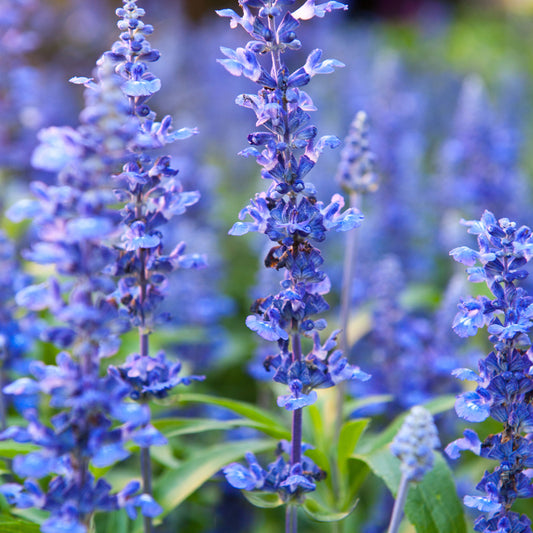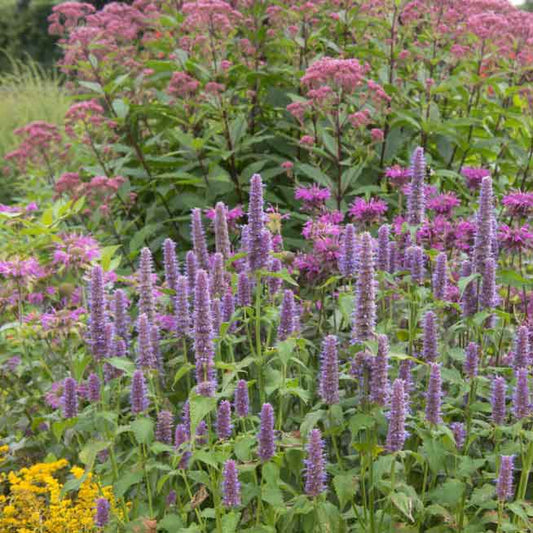-
main-collection-product-grid

Hyssop Seeds
Spikes of violet blue flowers attract pollinators and sweeten honeyHyssop Seeds
Spikes of violet blue flowers attract pollinators and sweeten honeyRegular price As Low As $4.79Regular priceUnit price per -
main-collection-product-grid

Hyssop Seeds - Giant Lavender Blue
Nectar-rich and fragrantHyssop Seeds - Giant Lavender Blue
Nectar-rich and fragrantRegular price As Low As $4.79Regular priceUnit price per
Planting the best hyssop seeds
- Used for fragrance, ornamental, and medicinal purposes
- Member of the mint family
- A hardy perennial herb that grows about two feet tall
- Provides a bold visual impact in beds, borders, wildflower gardens, and more
This evergreen garden herb is known for its wonderfully fragrant leaves and flowers. Offering a multitude of uses in today's world, hyssop is a member of the mint family and offers tall, thin green stalks with small leaves and unique, purplish-blue flowers. It's scent is sweet while it's taste is considered warm and bitter.
Known botanically as Hyssopus officinalis, this European mint can be used to aid in liver and gallbladder conditions, along with respiratory issues such as the common cold, sore throat, asthma, and coughs. These medical characteristics are found when the herb is either eaten in extract or drank in the form of tea.
Hyssop should be grown in dry, somewhat alkaline, well-drained soils with full (six to eight hours per day) to partial sun (four to six hours per day). Hyssop is tolerant of shallow rocky soils and erosion-prone locations. Start your seeds indoors eight to ten weeks before the last frost of the season, or sow directly into the garden after the final frost.
Cover your hyssop seeds with about 1/4 inch of damp garden soil. During the germination phase, make sure the soil is kept moist. As seedlings emerge, thin out the weaker ones. When transplanting from indoors, leave 12 to 18 inches between each plant.
Harvest hyssop before the plant blossoms for the most flavorful leaves, and be careful to clip any spent flowers. The blossoms of the hyssop are also edible when they are fresh. Fresh leaves can be eaten, and stems can be dried for later use. Dry a bundle of clipped stems by hanging it in a well-ventilated location until it is completely dry. To keep dried stems fresh, store them in an airtight container like a jar.
Hyssop thrives when planted near catmint, lavender, rosemary, and garlic chives. Attracting pollinators galore, hyssop benefits surrounding plants and, with its flea and beetle repellent characteristics, it also keeps surrounding plants healthy and pest-free. Hyssop is not an invasive species, but it will spread by self-seeding.
For more information about planting, growing, and caring for hyssop seed, see the Hyssop Seeds Planting Guide.

